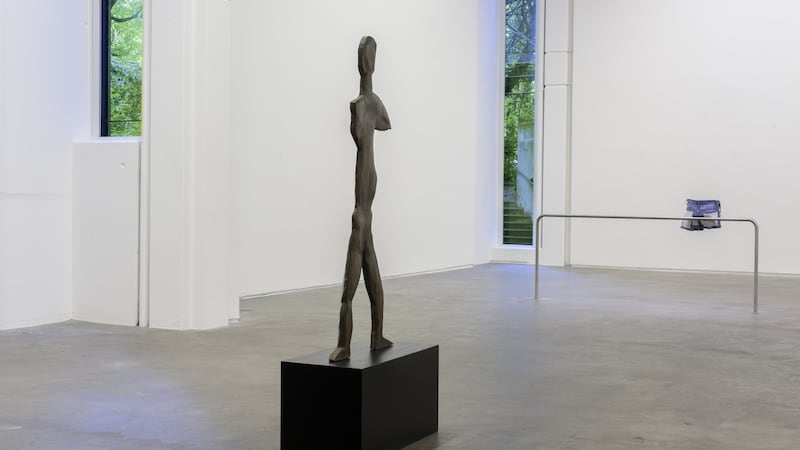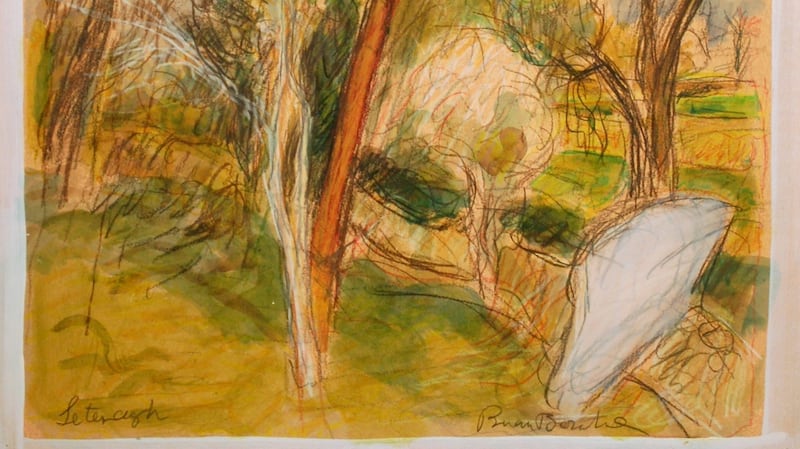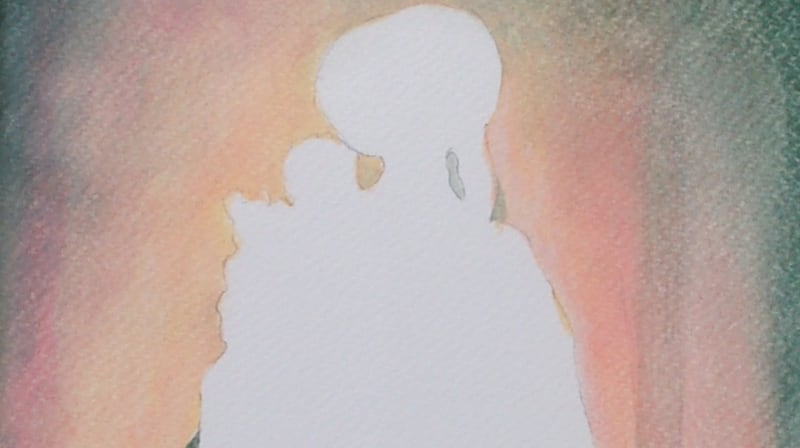Valérie Blass: The Mime, the Model and the Dupe
★★★★
Douglas Hyde Gallery, Trinity College, Dublin Until Septembers 7th douglashydegallery.com
One work above all put Canadian artist Valerie Blass on the map – her 2009 sculpture She Was a Big Success. Made of wood and expanded polystyrene, it is a fragmentary rendering of a crouching, mannequin-like figure in high heels, largely enveloped by the folds of a voluminous, massive wig. It has the concision of a cartoon, which seems to have contributed greatly to its popularity, but it is ambiguous. The title suggests a satirical, mocking slant, but it's not clear who the target of the mockery might be. The treatment is very stylised and anonymously bland, as most mannequins are. The pose is similarly stylised and non-naturalistic, anatomically unreal.
Fast-forward to Blass’s first solo show in Ireland, an iteration of one previously on view in Canada. In the cavernous Douglas Hyde, it comes across as guarded and tentative, mostly keeping to the edges and corners. That’s partly because it is physically quite sparse, especially following the relatively crowded space immediately inside the entrance, a kind of anteroom to the show. But it also has to do with the nature of the work. The introductory note says that Blass’s sculptures “operate in the realm of the double”, which is strictly true given her penchant for mirrors and composites, but might suggest an expansive physical presence, a doubling.

In fact, her doubles are diminishing, fragmentary glimpses of an original that is itself a glimpse or, as it happens, an absence. Absence is a consistent motif, specifically the absence of the physical person. She goes to great pains to create an intimation of physical bodies or fragments thereof. The mime of the title could refer to the way the bodies adapt distinctive poses, insistently acting out presence. Then she recurrently dispenses with the bodies and leaves us with, say, items of clothing they occupied, still shaped and bulging. Or, a folded amalgam of photographic glimpses might indicate an absent body. These interlocking shards of one-time presence, curiously located between the real and the immaterial, are intriguing and promising, though not quite satisfying – perhaps they are not supposed to be.
A line of anthropomorphic vessels offers another oblique approach to the body, picking up on a venerable tradition, one as old as ceramics. In everything Blass does, there is a sense of an artist trying to figure out how to address embodiment in a telling way while eschewing the formulaic. Her often playful use of a number of visual tactics, especially forms of metonymy and synecdoche, don’t take from the serious commitment involved.

Brian Bourke: Contemplating the Ineluctable
Jay Murphy: Leaving Shadows
★★★★
Taylor Galleries, 16 Kildare St, Dublin. Until July 20th taylorgalleries.ie
Constancy and change are the paradoxically twinned concerns of Brian Bourke's Contemplating the Ineluctable. He is, famously, an artist who has never made just one version of any particular subject, preferring to engage with things repeatedly. Such is the case here. That does not necessarily make his work repetitious. A great many artists basically make the same work over and over again, the same but different. Stravinsky once nominated Vivaldi as an extreme case of this when he said that the composer hadn't actually written 500 concertos, he'd written one and copied it out 499 times.
The landscape subjects in Bourke’s latest work are local and personal, and he tackles each repeatedly: the Letteragh Garden and the Beehive Orchard, close to each other in Galway, and the apple trees adjacent to his studio. In one series he not untypically inserts himself, in a garden, contemplating the “Ineluctable Blue”.
Bourke is a tremendously fluent draughtsman and there is a quality of continuity to his drawing, as though he might occasionally be interrupted, but otherwise drawing is his default, his natural state of being. Works in mixed media on paper predominate, with a smaller number of larger oils. The latter are fine, though they are more theatrical in feeling, in the sense of theatre sets, and a little more constrained than the works on paper, which are the essence of the show.
Their strength emerges through repetition. Dense patterns of twining trees recur, but the underlying flushes of colour vary widely, tracking the time, the weather, the seasons. As it happens, time is running out for the Letteragh Garden and the Beehive Orchard. In fact despite its residual name, the beehive is long gone, Bourke points out. And both orchard and garden are in the path of a planned road. The fallen apple tree, meanwhile, as though unaware of its falling, continues on with business as usual.

There is an expressly theatrical quality in Jay Murphy’s Leaving Shadows. Each painting concentrates on the radiant, outlined silhouette of a piece of ecclesiastical statuary. The idea came to her, she explains, in the museum of the convent of St Agnes of Bohemia. Struck by the impressive repertoire of religious sculptural subjects, she noticed they were variously illuminated, and each, with multiple light sources, cast pronounced, elaborate shadows.
She has made an absence of each statue, but the shadows elaborate on the missing image in each case. There is always that central lack – the something lost could be, she felt, a person, memory, religious faith – or something that never was. The art of losing, as Elizabeth Bishop put it, isn’t hard to master.











